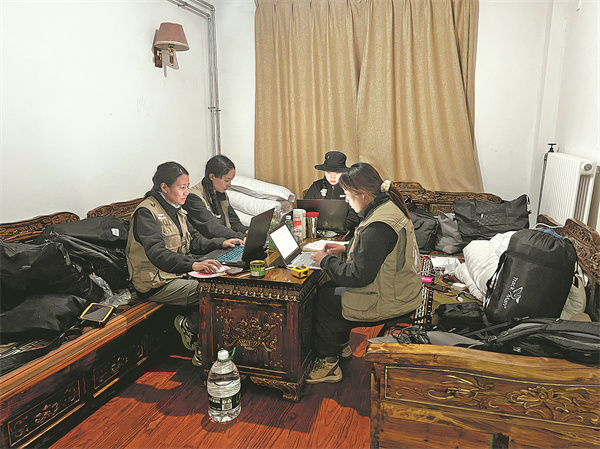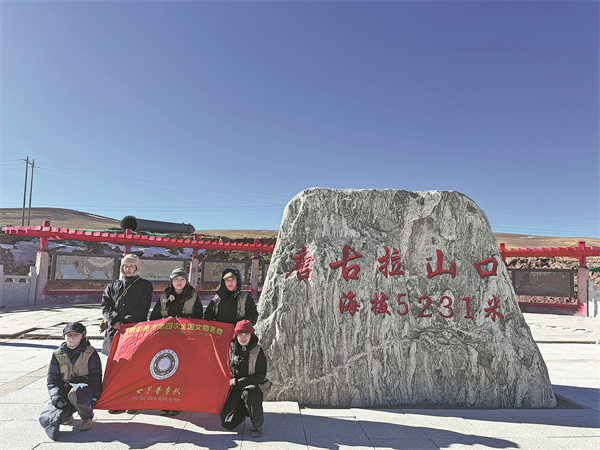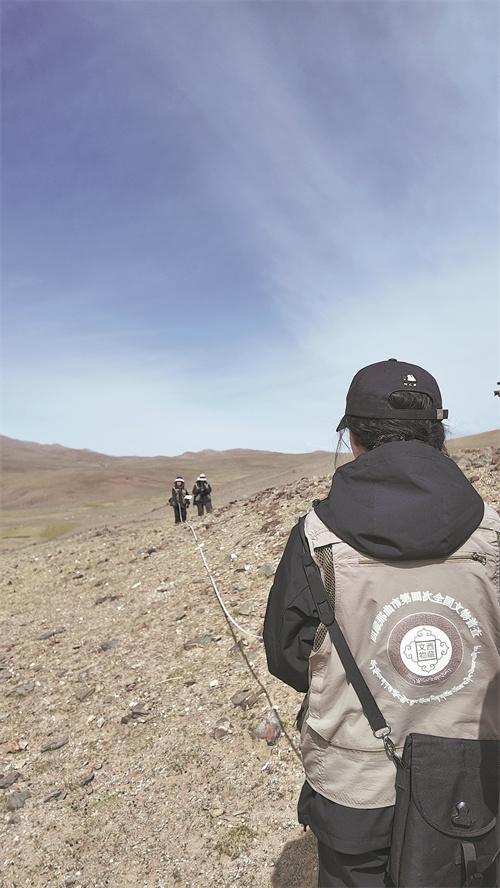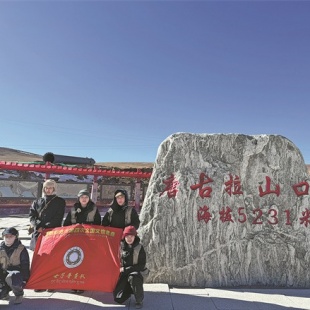A team effort


Survey days begin before dawn and stretch late into the night. In July 2024, while surveying a remote township in Nyima county, they split into two teams to locate hard-to-find relic sites. Even after working until 10 pm, the work remained unfinished.
It was too late to return to the hotel in town, so they decided to spend the night in sleeping bags in a local herding family's home.
"That night, we only had regular sleeping bags, and the nighttime temperatures on the plateau usually drop below freezing. It was so cold, we didn't sleep at all," Tsering Chotso recalls.
During another survey in Nyima county, the team had two frightening encounters with bears.
"That day, we were collecting samples at the entrance of a cave when we suddenly heard a growl. We began shouting loudly, to scare it away," recalls Lhamo Shitso, another team member.
"Even now, we still feel a lingering sense of fear when we think back on that experience," says Lhamo Shitso, smiling.
Over the past year, they have been traveling throughout Nagchu, conducting cultural relics surveys and spending most weekends working.
As the herders in Nagchu live simple lives, finding a restaurant on the grassland is not easy, so the team often sustains themselves on instant noodles while on the road. Sometimes, when they come across herding families, they are offered yogurt and milk, she adds.
Among the team's notable achievements is the discovery of a rock painting featuring a "wheel "pattern in Nyima county, an uncommon motif in the nomadic culture of the Qinghai-Tibet Plateau.
"Upon returning, we consulted with experts who identified the carvings as wheel petroglyphs. They explained that these petroglyphs provide evidence of early interactions between different ethnic groups and suggest that the people living in this area at the time had already developed transportation tools," she says.

During the day, they surveyed outdoor cultural relic sites. At night, they organized materials in their accommodations. But the long treks and intense work in the uninhabited areas did not dampen the team's enthusiasm.
To date, the team has completed field surveys of over 800 immovable cultural relic sites, including more than 460 newly discovered locations.
"This survey not only helped us better understand the current state of cultural relic sites in Nagchu, but also allowed me, as a Xizang native, to feel the weight of history and time while exploring the legacy of our ancestors," says Tsering Chotso.
"People often associate Nagchu with uninhabited areas, thinking it's unsuitable for human settlement. But after this journey, I believe what we call 'uninhabited areas' may well have been home to people thousands of years ago."






































